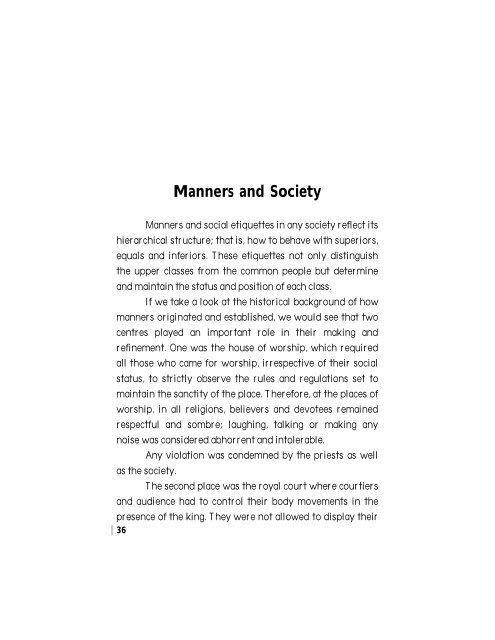Create successful ePaper yourself
Turn your PDF publications into a flip-book with our unique Google optimized e-Paper software.
Manners and Society<br />
Manners and social etiquettes in any society reflect its<br />
hierarchical structure; that is, how to behave with superiors,<br />
equals and inferiors. These etiquettes not only distinguish<br />
the upper classes <strong>from</strong> the common people but determine<br />
and maintain the status and position of each class.<br />
If we take a look at the historical background of how<br />
manners originated and established, we would see that two<br />
centres played an important role in their making and<br />
refinement. One was the house of worship, which required<br />
all those who came for worship, irrespective of their social<br />
status, to strictly observe the rules and regulations set to<br />
maintain the sanctity of the place. Therefore, at the places of<br />
worship, in all religions, believers and devotees remained<br />
respectful and sombre; laughing, talking or making any<br />
noise was considered abhorrent and intolerable.<br />
Any violation was condemned by the priests as well<br />
as the society.<br />
The second place was the royal court where courtiers<br />
and audience had to control their body movements in the<br />
presence of the king. They were not allowed to display their<br />
36


